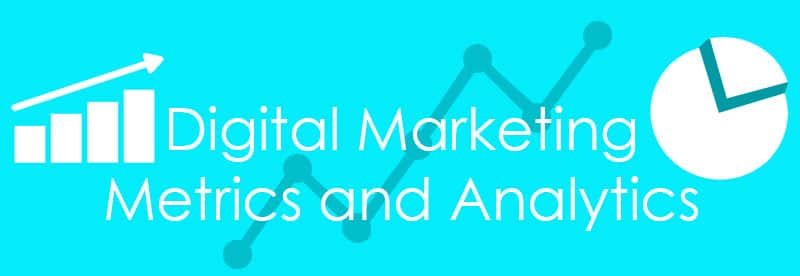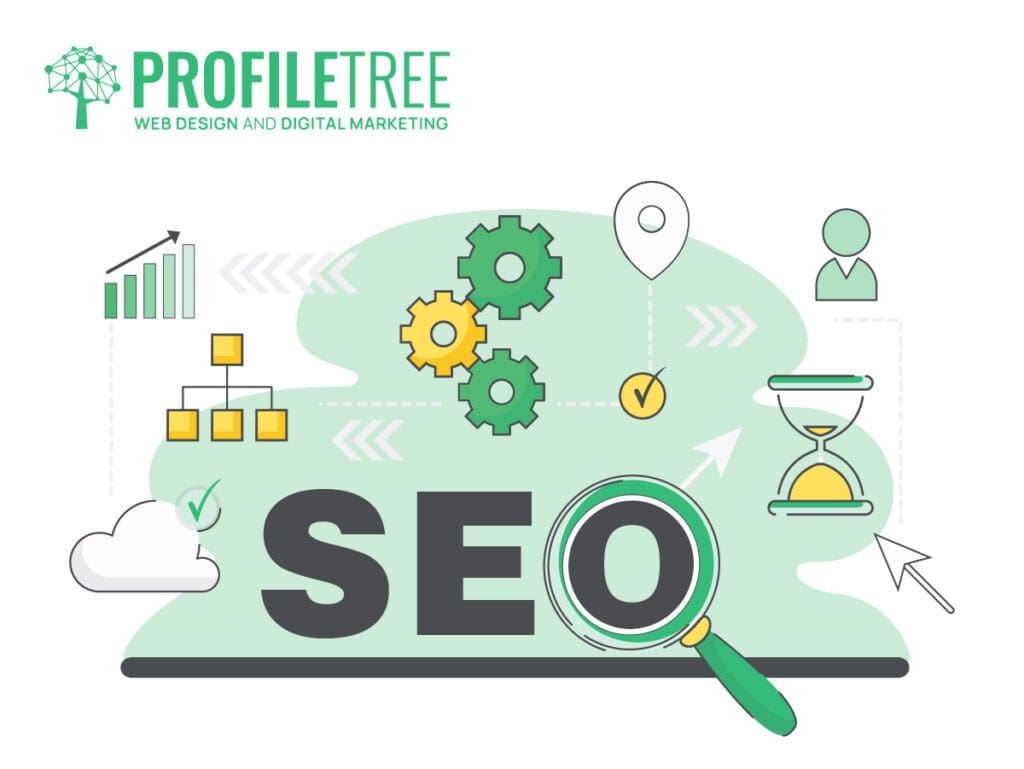

Digital Marketing Metrics and Analytics – We live in a digital era, and having a digital imprint online for your company is more than nice- it is necessary for longevity and success in today’s business. To achieve the top rankings on search engines, as well as constantly receive an influx of traffic through web searches, many factors have to be considered for a successful marketing campaign. To measure success, we need digital marketing metrics or marketing metrics and analytics.
When you are preparing to launch a digital campaign, if this area is not your forte, you will feel like a fish out of the water if you are unprepared with your questions and set a list of company goals that will be relevant to the campaign. Of course, many companies are claiming to give you the best digital campaign for your company. However, for you to know what is the best, you have to understand first why you need these measures, how they will directly benefit you, your end goals and if the strategy will work in tandem with a current campaign- if any. Let’s start with the basics of digital metrics; if you want to know what digital marketing is – we share it in this linked article.
Why are Metrics and Analytics Important for a Digital Campaign?
Metrics and analytics are an essential part of any solid digital campaign. They allow the marketer to measure the campaign’s success and regular activity and tweak the strategy and input accordingly. Measurement is practised by analysing each aspect that is put into the campaign so that it can be modified to attain sales and marketing goals. A vital set of metrics will provide the following:
- Real-time analytics that captures groups of data monthly, weekly, daily or even hourly
- Social media stats across all social media profiles
- Mobile web traffic
- Overall site traffic
- CPC (Cost per click) values
- Engagement peaks and valleys
- CVR (Conversion Rate)
- Bounce Rate
- SEO data
- Rate, length, origin and location of visitors, as well as the rate of current return visitors to the site
Any business’s overall goal is to have leads, click-through rates, and actual customer conversions, which equals sales. In evaluating the type of customer that is visiting you, what they are looking for when they search for you and what their interests are, you can further delve into- and expand- your demographic. This is why digital marketing is essential for your business.

What is SEO, and why do I Need it?
SEO is probably the most important aspect of a digital campaign, although it does not exist independently. SEO is the first part of a digital strategy that will start to get you ranked on the search engines. SEO rules and algorithms for ranking sites have been ever-changing because of keyword stuffing and other grey and black- hat techniques. These techniques were implemented to trick search engines and get websites with large amounts of spam, viruses, and pop-up ads ranked highly on the top search engines. Therefore, the SEO strategy that is used mustn’t work to your disadvantage, getting you ranked poorly on search engines and flagged for underhanded methods.
A good digital marketer knows how to use organic methods paired with great, real-time content that is relevant and educational to pique the interest of a lead. Advertising and other paid methods must also be used- paired with SEO and other digital marketing tactics to offer a tight digital marketing campaign overall.
When you can provide your customers with the resolution to a problem that they may not have even realised they had- you’ve crossed over into another realm. This is where you can convert your lead into an actual sale. Here is what a good SEO campaign should look like and provide for your corporation:
- An evaluation of your current (if any) SEO, search engine ranking and the current content that is acquiring traffic to your website
- An outline of the gaps in your current marketing and a solid strategy for tangible improvement in those key areas
- Identify key business objectives
- Offer owned, earned and paid media options for your SEO plan
- Evaluate keywords, search terms and meta tags that should be added to your website
- Have metrics for your campaign that will detail targeted growth, growth spurts and median evaluations for your digital marketing campaign.
- Dates for re-evaluations to constantly stay in tune with ranking algorithms
- Hone in on finding new local customers.
- Offer a strategy to expand your current market and how to target new customers
- A current sales assessment as well as a strategy to increase sales and lead conversion, with a specific timeline
To read more about SEO – we share some of our most popular articles here:
What are Negative Keywords? Learn an SEO Essential
5 Reasons to Invest in Small Business SEO
Questions to Ask Before Investing in SEO Services
The Most Common Search Console Errors
Of course, if you require the best SEO services or agency SEO help – then do reach out to our team; we will be delighted to help with your digital strategy through to optimising your website. We are the perfect agency to be your small business expert marketing consultant.

How Digital Marketing Metrics and Analytics Help You Achieve Your End Goal
Live metrics allow your corporate sales team and top business executives to identify key performance indicators (KPI), which will help guide how the marketing budget should be allocated. Having this key information now gives your team the foresight to prioritise and make the best use of the marketing funds for the digital campaign. Digital marketing metrics and analytics are there for you to use as a close view of your company’s performance, and they happen in real time. To reach your end goal- whether that be a sale, a phone call, or an inquiry- you first have to evaluate your overall goals and the steps currently taken to get there.
This is the information that you will initially present to your digital marketing team, which will entail them to extrapolate data based on your current performance. After the performance evaluation, they will present the company with an outline of a digital marketing strategy, with a timeline on how each method will be executed.
Once you have all of this information in front of you, you’re ready to move forward with a digital marketing campaign for your company that will aid in building your current online ranking and keeping your company relevant, up-to-date with fresh content marketing strategies and offer real growth tactics for your business.
In 2018, successful marketing initiatives are all about the data. A lot of modern marketing campaigns and programs have a weak spot—which is collected information. In fact, a recent study conducted through Future Buzz recorded that 37 per cent of surveyed companies prioritize data-gathering skills.
You can still strategise with digital marketing analytics if you’re involved with online marketing, content marketing or time-tested-and-true marketing campaigns. It’s time to upgrade your skill set, enhance your approaches and strategize your business’s ability to connect with buyers. Find out why digital marketing analytics and metrics are important—as well as why you need them.
How Digital Marketing Metrics and Analytics Departments Refine Campaigns
Previously, companies could study consumer groups, outline different target markets and match campaigns with buyer needs. Unfortunately, 2017 doesn’t support base-measure population studies. There’s simply too much information going around.
The case for metrics and analytics is a good one. Any professional engaging during the Internet Age—from SEO impactors to content marketers—can strategize by fortifying their data capabilities. A business can micromanage technological success by ensuring a baseline data collection standard. Digital marketing departments have a lot of competition. To beat the competition, they need better tools. While various digital marketing metrics and analytics options exist, the following are—by and large—the best in the business. If you want to learn more about digital marketing – our agency has produced several digital marketing courses for you to check out.
Tool One: Digital Marketing Metrics and Analytics – Predictive Lead Scoring
The most powerful metric and analytic tool you can get is one which scores predictive leads. Marketing analytics tools ‘model’ new digital marketing campaigns based on current information. Predictive modelling utilises conventional data, compiles it, crunches it and predicts future buyer behaviour. They let marketers assess content easily, helping them optimize their brand’s revenue potential. covers predictive lead scoring in detail, expounding upon its estimated 250-per cent ROI increases.
Tool Two: Digital Marketing Metrics and Analytics – Marketing ROI Plans
Speaking of ROI increases, marketing ROI planning is another powerful metric and analytic tool today’s businesses are using. Big data sometimes creates a haze of numbers. Sometimes, this haze is hard to penetrate. However, big data is in there, and it can help your business excel before crumbling under its weight. Marketing ROI plans use big data, real-time data and automation to estimate which approaches will boost ROI. Once these approaches are determined, the digital marketing metrics and analytics strategies are implemented.
Tool Three: Digital Marketing Metrics and Analytics – Content Marketing Measurement
It’s important to measure the impact of any strategy you put into motion—and content marketing is no different. By tying together individual pieces of content, you can view your digital marketing approaches on a granular level. Sure, tools which compile data are important. Sometimes, getting a closer look can make all the difference. Businesses often use content marketing metric measurement packages to determine revenue derived from a single blog post, tweet, or website click.
Tool Four: Digital Marketing Metrics and Analytics – Website Revenue Measurement
Marketing analytics begin at the foundation. If your business runs a powerful metric and analytic platform, it should look at your website’s most impactful effects. So, you’ll need a diversified CRM system, automation software, a marketing production toolkit and a web presence tracking tool.
These tools, when used effectively, can track your website’s visitors. More importantly, They can track comprehensive user behaviour, giving you—the decision maker—a detailed look into awesome campaign approaches. Collected data is derived from web user congregation, clickthrough, eCommerce purchases and more. Many website revenue measurement tools use multifactor analysis, which compares retention rates to identify valuable, long-term customers.
The Customer’s Sales Funnel Journey
Again, digital marketing metrics and analytics are focused on the customer’s habits. There’s a lot of data out there. Some of it’s useful, and some of it isn’t. To grab the customer’s attention, a business needs to map out its path to eventual brand interaction, purchase and future behaviour.
In most cases, a good sales funnel can solve the marketing world’s biggest problems. That said, sales funnels aren’t built in a day. They’re rearranged, sometimes tediously, to better serve the customer. Fortunately, data analytics can help with funnel redesigning.
The Power of Comparison
Google has made product comparison incredibly prevalent. Today’s buyers can compare prices, quality and—most importantly—user reviews. Business.com asserts that approximately 71 per cent of buyers consider the comparison to be important. Amid the Internet’s chaos, a strong sales funnel capitalizes on the power of comparison.
For this reason, decision-makers use digital marketing metrics and analytics to determine buyer preferences. Knowing what customers want is vital when developing a product, service or even an entire brand. You can turn a one-time purchase into lifetime brand loyalty if you work hard. Because modern digital marketing toolsets allow marketers to measure PPC, SEO, social media and content marketing success, today’s impactors can assist buyers through the sales funnel easily and effectively.
The Digital Sales Marketing Funnel Up Close
A buyer’s journey through the digital sales funnel is complex but can be boiled down into a few processes. Let’s take a look.
Awareness and Consideration
First, users will discover your product. Likely, it’ll happen from Facebook Ads, a magazine or—if you’re lucky—via a friend’s reference or a positive review. Once they’ve discovered your brand, they’ll consider it. They’ll research it—sometimes, endlessly—to determine if its benefits are good enough for their life. Be aware, however, that your buyers are probably looking at your competition, too. At the end of the day, the value will win these customers over.
Preference and Purchase
This value is derived from a few things. Customers have pre-established preferences. They make up their minds, sometimes quickly before ever considering a product. So, it’s your job to ensure any unique value sticks out. Attract your customers’ preferences and bring them to the forefront. Then, focus on turning a heavy preference into a purchase. Address buying concerns before they’re asked. Here, using metrics and analytics will be important. If you can determine the customer’s line in the sand, purchase-wise, you can ensure simple page clicks turn into eventual purchases.
Loyalty and Advocacy
The sales funnel doesn’t end with purchases. In fact, a purchase only begins a marketing funnel’s most important aspect. Repeat customers enhance long-term ROI. To get long-term customers, you’ll need to use marketing metrics and analytics to determine who’s returning for more. Foster loyalty by feeding exclusive deals, giving buyer-persona-relevant discounts and empowering your brand’s biggest fans.
In doing so, you’ll turn regular buyers into advocates. A customer who benefits from your brand’s awesome benefits will advocate it to others. Encourage brand advocacy through referral programs, incentives and—you guessed it—buyer-relevant deals. Don’t be afraid to change up your deals, either. In fact, continuously establish new value by studying your buyer’s long-term preferences. A hack for loyalty can be creative digital strategies – for example, using influencer marketing campaigns.
Managing and Refining the Marketing Campaign with Analytics
Big data, when unrefined, can be a mess. In many ways, digital marketers select metrics and analytics tools to get their data “in shape.” Today’s latest, greatest analytics applications strategize data at the ground level, measuring HTML footprints, conversion and even digital feedback.
A centralized analytics function—which works across many departments—helps decision-makers benefit from any insights derived from collected data. Often, businesses elect an analytics ‘chief’ who manages these insights. Insights are reported to a business’s leadership group—which then adjusts an entire marketing campaign based on important information.
Analytics, in essence, can redirect an entire business’s direction. For this reason, an organization’s analytical maturity relies on a few factors. Highly mature analytics-based companies toss out irrelevant data when working with digital marketing metrics and analytics. They also experiment. At the end of the day, data is simply data. It needs to be converted into information—and that information, over time, can be applied to the sales funnel.
You must also consider future-proofing your digital marketing metrics and analytics strategy – as new tools and platforms become mainstream. Ideally, your metrics will transfer over to them with ease. Consider things like voice search, new media buying, social media like TikTok, and communication platforms like WhatsApp for business.
Let’s talk about Digital Marketing results!
Start improving your website, optimizing your digital marketing strategies and increasing your sales.
The Critical Importance of Analytics in Digital Marketing Recent studies reveal that organizations that leverage data and analytics achieve, on average, 15-20% higher returns from their marketing efforts. With the ability to track KPIs across channels, optimize based on insights, and quantify campaign impact, analytics is essential for digital marketing success.
Key Digital Marketing Metrics, Analytics and Definitions
Website Traffic Metrics:
- Sessions – Number of visits to your site during a period.
- Bounce rate – Percentage of visitors who land on one page and exit immediately. Below 50% is good.
- Pages/session – Average number of pages viewed per visit. Higher indicates engagement.
- Goal conversions – Visitors completing desired actions like downloads, purchases, etc.
SEO Metrics:
- Organic traffic – Visitors from search engines. The goal is to increase this.
- Keyword rankings – Position of target keywords on search engine results pages.
- Backlinks – External websites linking to your pages. Measure quality and volume.
Email Marketing Metrics:
- Open rate – Percentage of subscribers opening an email campaign. Above 20% is acceptable.
- Click-through rate (CTR) – Percentage of people who click links in the email content. 2-3% is good.
- Bounce rate – Percentage of those who exit from the landing page without further action. Lower is better.
Social Media Metrics:
- Engagement rate – Likes, comments, and shares as a % of total followers. 1-3% is solid.
- Impressions – Number of times content is displayed to users.
- Reach – Total number of unique users who see content.
Setting Goals and Tracking KPIs Align metrics to business goals – traffic, leads, sales, etc. Set realistic targets. Connect goals in analytics platforms. Track progress over time. Review weekly and monthly for insights.
Optimization Using Metrics Data Identify underperforming areas through metrics. Diagnose issues using reports. Implement changes to pages, campaigns, and content. Continually refine strategy based on the latest data.
With the right metrics framework and analytics processes, digital marketing performance can be measured, optimized and taken to the next level.
References:
Frequently Asked Questions on Digital Marketing Metrics and Analytics
Q: What are the most important metrics I should track for my business?
Focus on 3-5 goal-based KPIs per channel, like website conversions, email click rate, and SEO traffic. Align with business objectives – sales, leads, brand awareness. Track weekly and monthly for optimization.
Q: How can I connect my goals in Google Analytics for tracking?
Under the Admin section, navigate to Goals and create a new goal. Define type – URL destination, duration, event, etc. Set funnel steps if needed. Enable goal tracking.
Q: What is a good target for metrics like email open rate and social media engagement?
Benchmark metrics vary by industry, but general guidelines are:
- Email open rate – 20%+
- Social media engagement – 1-3%
Q: How often should I review analytics reports?
Schedule a weekly review to monitor the latest traffic and identify trends. Do monthly deep dives into reports to uncover optimization opportunities. Set alerts for goal achievements.
Q: Which metrics indicate poor website performance?
High bounce rates (70%+), low pages/session (1 or less), and decreasing traffic can show website issues. Review user flow, content, and conversions funnel for fixes.
The post Digital Marketing Metrics and Analytics: The Essential Metrics Guide for Tracking Success appeared first on ProfileTree.

Leave a Reply